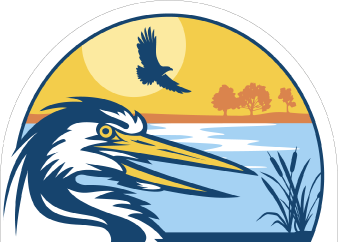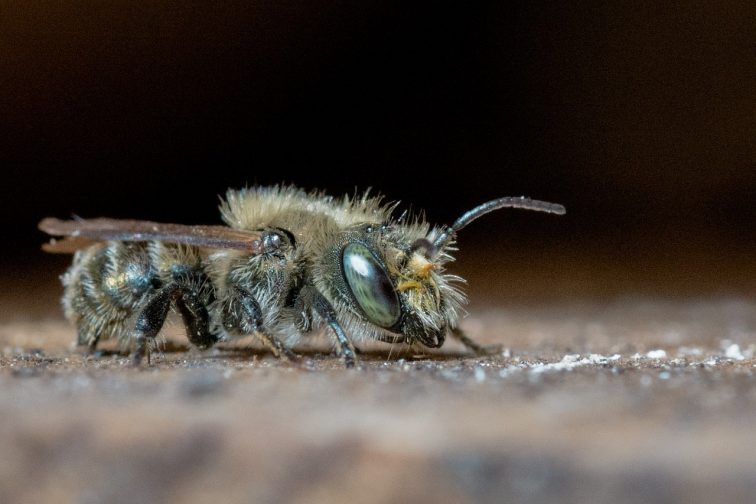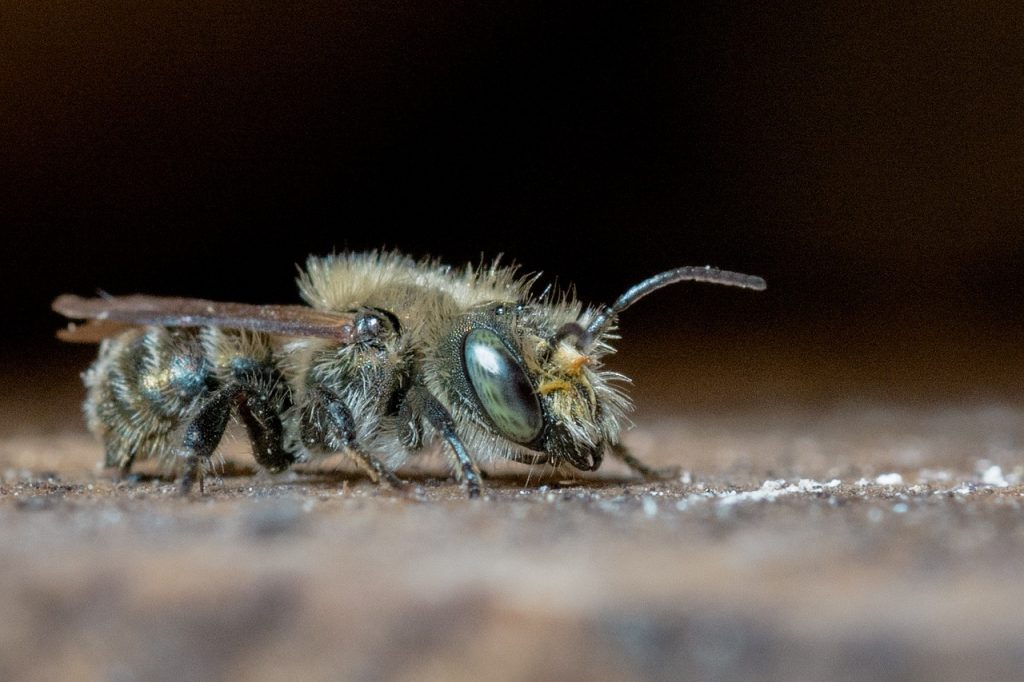
What’s that you say? Honey bees aren’t native? The honey bees that we are familiar with in New York State are an introduced species, brought to the US by European settlers in the 1600s. Through their spread by both natural swarming and continued human introduction to new areas, they can now be found throughout the US, and have become an important part of our agricultural industry. In fact, it can be said that honey bees are an agricultural animal, in the same way that sheep and cattle are.
Honey bees often get associated with conservation, but it’s important for us to remember that they are not part of our natural ecosystem in NY state. In some cases they can have a negative impact to their native counterparts. When times are good, there is plenty of pollen to go around. But when times are tough, honey bees compete for food with native bees—some of which are at risk.
Click here to become a member!
Click here to donate!
For pollination to occur, orchards need less mason bees per acre than they would honeybees. Mason bees have a 95% pollination rate, where honeybees have a 5% pollination rate.
KeepingBackyardBees.com
But I’m not here to malign the honey bee. I want to discuss ways we can help some of our native bees. There are some easy things you can do.

- Grow gardens with native flowers and plants.
- DON’T use pesticides (and think twice about herbicides for that matter, see this article).
- Get an understanding of the various native bees (and other pollinators) we have.
- Give them some shelter! This could be in the form of bee-houses, brush piles, or exposed undisturbed soil.
If you go with a bee house, the most important thing to remember is proper management. You wouldn’t put up a Purple Martin house with out cleaning it out and maintaining it every year. Make sure your bee houses get the same level of care, or you will wind up creating a better habitat for killing your bees than helping them – there are a number of parasites that can decimate the larvae growing in your bee tubes. For this reason, drilled hole houses are not the best option – as they are difficult to clean. Houses made with tubing are preferred, because the tubes can simply be replaced each season.
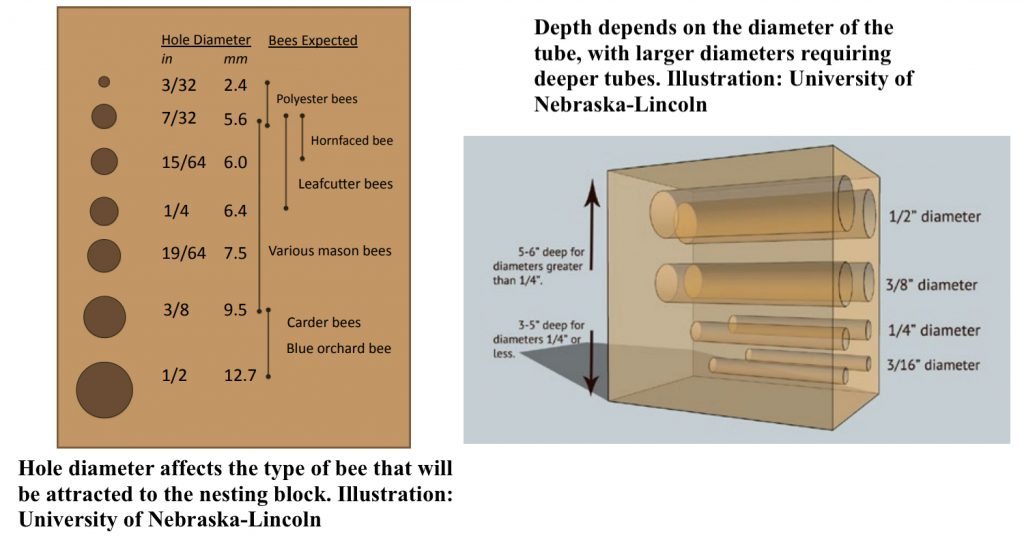
There are MANY resources online for building or buying a bee house. At its most basic, you need to provide some type of tubes, in a structure that provides some protection from the elements. You can make them out of almost anything, as long as you follow some basic guidelines:
- Tubes are preferred over drilled holes (for maintenance reasons).
- Go for a diameter around 5/16ths of an inch – although providing a variety of sizes is best, not all bees are the same size after all!
- The tubes should be 5-8 inches long – if your tube is too short, it will impact the ratio of males to females, but again variety is good depending on the species you expect to use it.
- Make the roof overhang the tubes by a few inches to help protect from the elements.
- Make sure there is a back to the house/and or the tubes (so there is only one entrance). Natural tubes will often have a natural segment block that you can cut to for the “back”.
Eggs laid further than 3 inches from the entrance of the nesting hole are usually females, and eggs laid in the outer 3 inches of the hole are usually males.
Oregonstate.edu
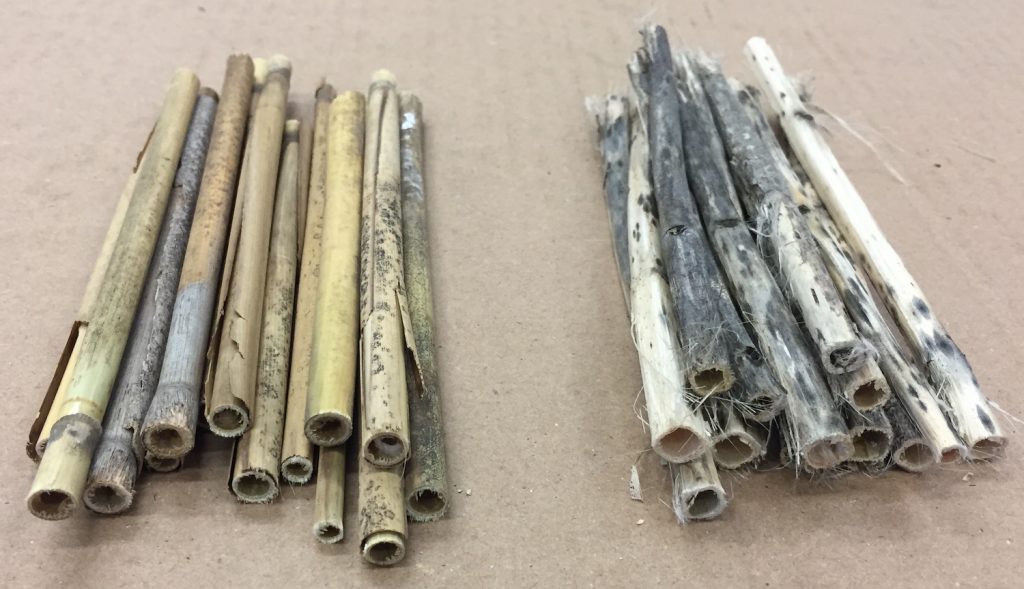
Volunteers at Iroquois National Wildlife refuge have been working on some bee house designs leveraging locally sourced natural tubing (not sourced at INWR). Volunteer extraordinaire Carl Zenger is putting together a number of bee boxes using tubes made from phragmite and milkweed. Phragmites are considered an excellent option for bee tubes because they are a locally available material, and of course all natural. Interestingly, like the honey bees, there are non-native strains of phragmite. These can be very invasive (see Cornell report). What better way to deal with an invasive species but to leverage it to support our native bees!
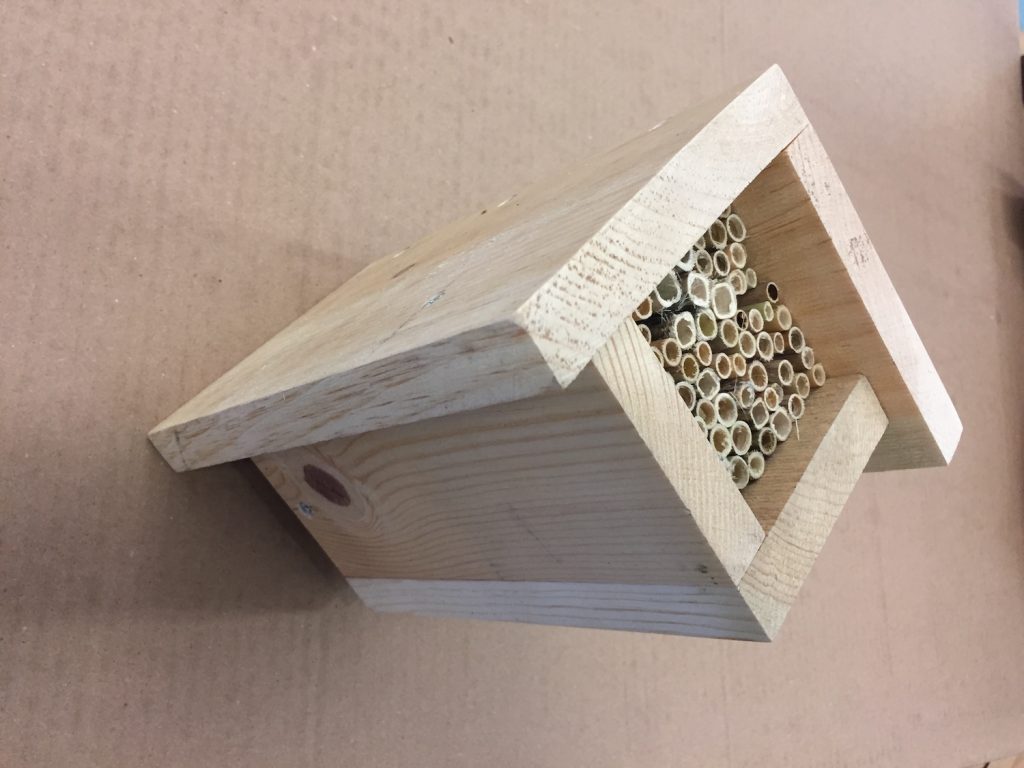
Aiding our native species does some take time and energy – effort, on our part. The end result is well worth it, a diverse ecosystem tends to be a healthy ecosystem. If maintaining bee-houses isn’t something that you are comfortable with, another option is to support organizations like FINWR! Proceeds from memberships and donations go directly to support activities at Iroquois National Wildlife Refuge – activities like Carl and other volunteers building and placing bee houses at the refuge!
